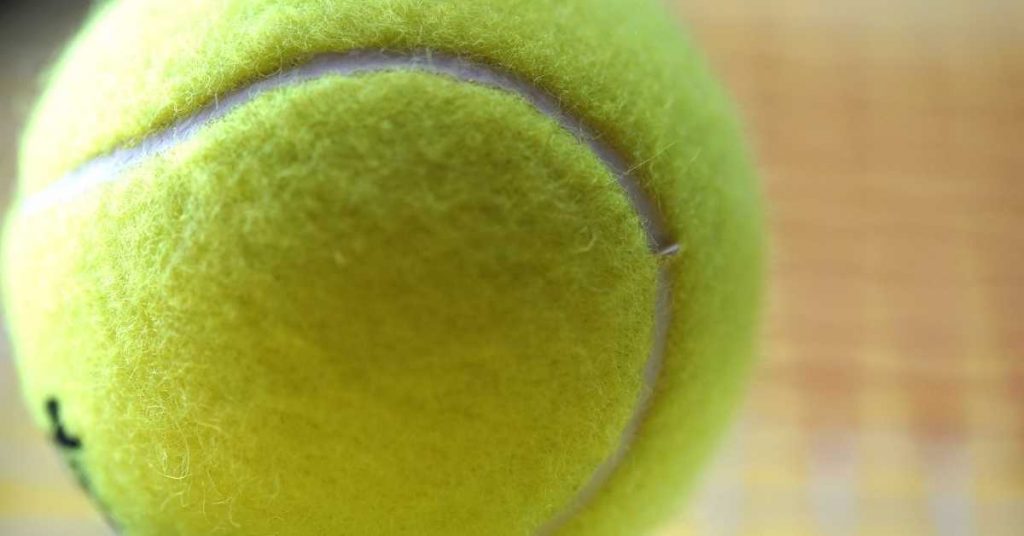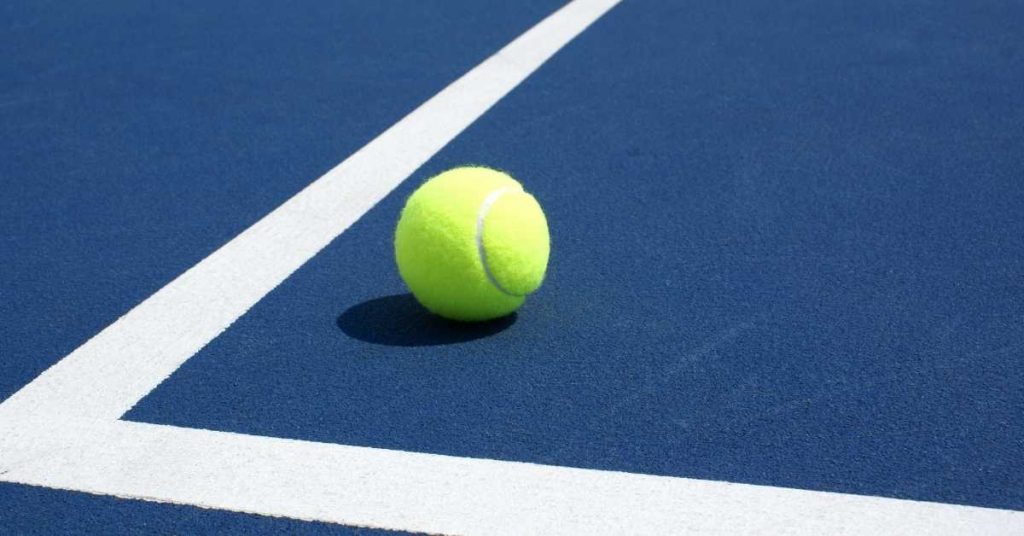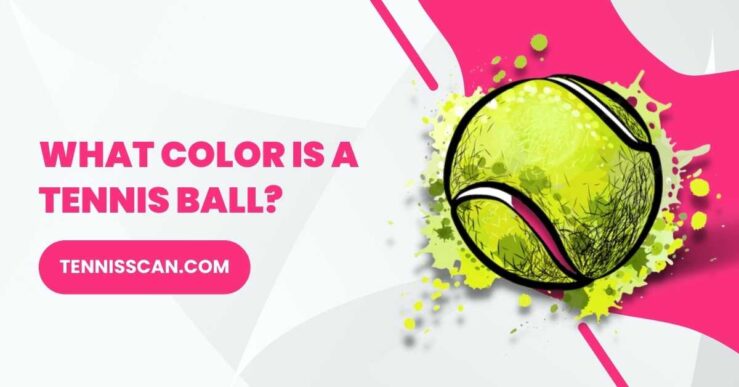If you’ve played tennis, or you’ve been watching Wimbledon, or you’ve ever played fetch with your dog, you know what color a tennis ball looks like. Some colors are believed to be consistent, despite the fact that visual acuity is always somewhat subjective. Oranges are orange at all times. All fire engines are red.
Tennis balls‘ color has changed over time to improve visibility, and as we’ll see in this book, there has been some dispute over whether they should be yellow or green. The contentious discussion around the color spectrum’s placement of the commonplace felt ball seen on courts or ejecting from serving machines was examined by Marina Koren in The Atlantic.
After learning that her coworkers saw the ball either as yellow or green, she tried to figure out why and see whether the ball cans held the key to a clear solution.
What Color is a Tennis Ball
Think about the tennis ball. The small neon orb’s clever construction allows it to coexist at the top echelons of what may be one of our most demanding sports, fit snuggly on the legs of broken chairs, and be preferred by man’s best friend. We take the tennis ball’s design lightly because it is such a common and plain object in our lives.
Who hasn’t accidentally discovered one of those in a distant closet or garage? Considering its lack of activity, one of 2018’s most heated online discussions centered on its unusual color: Is it really green or is it really yellow? The color in question comes from an unexpected place: The great British documentarian David Attenborough, best known for his “Planet Earth” series, had a significant influence on how we perceive the tennis ball today.
The English game of lawn tennis, which according to most sources was created in the 1870s, is where the current sport of tennis got its start. Real tennis, an indoor racquet sport, was translated into lawn tennis, which in turn was adapted from jeu de paume, or “the palm game,” a popular French game.

Complicated Answer About Tennis Ball Color
The International Tennis Federation, or ITF, stipulates that a tennis ball must be yellow in color as per tennis legislation. In response to viewers’ difficulties following the motion of white balls on television, the directive was issued in 1972. Optic yellow is the color that manufacturers like Gamma Sports use to describe their products.
So why do some individuals think the balls are green? One reason is that a pure yellow hue can be challenging for some people to articulate. Yellow is simple to recognize when compared to other colors, such as paint swatches, but it can be challenging for people to describe when there is nothing to contrast it with.
Second, people frequently adjust colors dependent on the illumination. Some people could disregard warm hues like gold or cool hues like blue, altering their perception and interpretation of the color spectrum. The ball can appear to be yellow if they ignore cool hues.
Green, if they ignore warm hues. People who are nocturnal under artificial light may be more prone to discount warm colors, whereas those who are active during the day under natural light may discount cold colors, further skewing their views. A tennis ball is actually yellow. However, how you perceive the world will determine whether it seems that way to you.
Why did I see Different Colors?
Let’s imagine that we’re only discussing official competition balls for the purposes of this blog. The fact that yellow is a color that is best described in contrast to other hues is a problem. For instance, a yellow object is simple to describe when compared to its surroundings’ other colors, such as a banana in a dish of fruit or the lines on the pavement.
A yellow object, however, becomes more challenging to depict when it stands alone with nothing to contrast it with. Green items experience the same thing. Lighting conditions and how our brains interpret and adjust for them also play a role.
According to a theory put out by some scientists, we adjust colors so that objects appear steady in a variety of lighting conditions. According to popular belief, some people underestimate cool hues and mistake tennis balls for yellow.

On either side, those who disregard warm hues perceive them as green. And yes, this is the widely accepted explanation for why some individuals perceived the notorious Internet clothing as white and gold rather than blue and black.
Colored Tennis Balls
For children aged ten and under who are learning how to play tennis, various colors also aid in differentiating the various levels of the game. Colored tennis balls can be used for a variety of functional yet surprising purposes aside from the court, including laundry, chairs, walkers, and popular pet toys.
| Kind | Color | Category |
| Penn Youth Foam Balls | Yellow / Red | Kids (4 – 6 ) |
| Penn Youth Felt Red | Yellow / Red | Kids (6 – 8) |
| Penn Youth Felt Orange | Yellow / Orange | Kids (7 – 10) |
| Penn Youth felt Green | Yellow / Green | Kids (11 – 12) |
| Zanies Puppy Pride | Purple, Blue, and more | Dogs |
| Top Glides Precut | Black, Brown, and more | Walkers |
| Wilson Championship | White | Laundry |
| Penn Championship | Pink | For a cause |
FAQ’s:
Tennis balls can come in any hue, but if they’re being used in a professional match, they must be yellow. That rule was established by the International Tennis Federation in 1972, and it has not changed.
Tennis balls were either white or black for almost a century. Tennis balls didn’t develop their vivid neon color until 1972.
The only permitted colors for tennis balls as of right now are white or yellow, according to the ITF’s official tennis rules. Additionally, well-known tennis manufacturers like Wilson printed optic yellow right on the can of their ball cans.
Blue appears to be the most well-liked color. That’s all there is to it. If you correctly predicted that a tennis ball is green, kudos to you. If you correctly predicted that a tennis ball is yellow, congrats.
